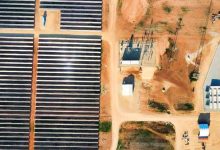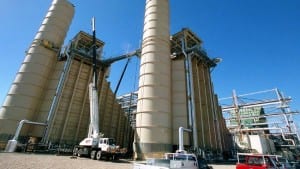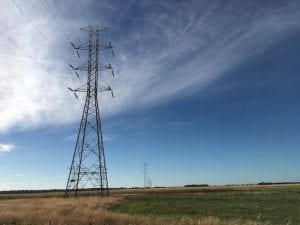Australia’s leading energy bodies are currently in the midst of the biggest market reform in more than two decades, and there is a lot at stake: The future of the clean energy transition in Australia, and the role that incumbent and future technologies can and will play.
The changes being mooted by the various bodies, under the auspices of the Energy Security Board, are massively complex and herald the biggest revolution in the electricity market since it was designed more than two decades ago.
But the big question is this: Will it facilitate the sort of rapid transition laid out by the Australian Energy Market Operator in its Integrated System Plan, or will it be one that maintains existing, or erects new market barriers? What does it mean for new technologies, such as battery storage, EVs and smart appliances? And what does it mean for the incumbent coal and gas generators?
The ESB this week is holding a series of webinars outlining how it is thinking about the market re-design that is due to be finalized next year and come into effect post 2025. They are seeking input by October 19.
There are several major themes, mostly around providing the reliability and the security needed for the grid as the technologies change.
It is looking at creating markets for services such as inertia and system strength, and a “bi-directional” market that values demand as much as it values supply, and it will also look to encourage “distributed energy” – rooftop solar, battery storage and EVs – favoured by customers.
It is concerned, as is AEMO, by the approach of “negative demand” in states like South Australia as soon as 2023, and by the number of market “directions” needed in the absence of a proper market signal for the essential system services.
The current rules – by near unanimous view – are no longer fit for purpose. But how to create a new design that is both fit for purpose, and is flexible enough to adapt to the constant improvement and changes in technologies?
RenewEconomy interviewed ESB chair Kerry Schott shortly after the first webinar on Wednesday, and she was emphatic about a couple of points.
One is that the energy transitions will happen faster than most people think. Schott believes, for instance, that the central scenario outlined by AEMO in its 20-year blueprint is “very conservative”. That’s the scenario based on current policies that predicts a 70 per cent share of renewables by 2040.
“I think we are headed down the step change scenario,” Scott said, referring to the AEMO scenario that looks at a 94 per cent renewables share by 2040. “I think the central scenario is very conservative.”
Will the new market design act as a prop for the incumbent coal and gas generators, as some fear?
“I don’t think they will – I personally think (the thermal generators) are likely to go sooner than people imagine, with the possible exception of the odd plant that has flexible capacity,” Schott said. (AEMO boss Audrey Zibelman shares that view, as do many analysts).
“Liddell is going, Vales Point won’t be too far behind, and Eraring needs a new ash dam. I can’t see (Eraring owner) Origin Energy putting up money for that.”
The biggest challenge, Schott says, is the issue of system “security” – ensuring the long term market signals are in place to provide sufficient services such as inertia and system strength as the coal and gas generators retire.
“We’re not helped by governments – and not just the federal one – buggerising around in the markets,” she said. (Schott has been critical of both the government’s underwriting scheme known as UNGI, and now, it would appear, its latest threat to build a gas plant of its own).
“If you were thinking about a big battery, it’s just very difficult to have the confidence you will get the long term returns,” Schott says. “You know would would make a bit of money, but you cannot be sure when. So that’s a bother, it’s a long term bother.
Schott also says that “sorting out” DER – in a way that is good for consumers – is critical as this will become an increasingly important part of the market, and will help shape the load of the grid.
She said one important factor for the ESB was the problem of connections, which is impacting many large scale renewable energy projects, particularly in Victoria, and is affecting investment.
“Everyone hates Cogati,” she said in reference to the controversial plans put forward by the Australian Energy Market Commission. “But I can’t see how you can manage congestion on grid without something like financial trading rights. Maybe we don’t need it immediately … if we get people investing in renewable energy zones …”
Schott also made reference to “engineers in brown cardigans”, when talking about the pace of the transition, and how some networks and retailers have been slow to react to those changes, and the challenge of balancing of traditional views about the operation of the grid, and the new technologies that are turning many assumptions upside down.
She did not think that the absence of an environmental or climate component of the National Electricity Objective would get in the way of that transition, largely because all the states had set zero emissions targets by 2050.
“What I reckon is that the energy transition is inevitable,” Schott said. “If you were going to start over, you wouldn’t start from where we are now … it would be much more planned about the amount of renewables coming in, and coal going out.
“We are basically letting things rip, with the states wanting more renewables … and we (the market bodies) going around trying to keep the lights on. So far, I think it is OK. I do think we are going to end up in right place on the renewables front.
“They are driving price reductions. Whatever your view about emissions is, renewables are what is driving wholesale price reductions. The federal government is still reluctant to say that, but if you look at what happened to wholesale price reductions it is entirely due to wind and solar.”
And what has she learned most? “The system is changing rapidly. I know a little about telcos, and I’m used to technology changing quite dramatically, it does that in electricity too. But as an industry, it is not geared up to deal with those changes.”
Earlier in the webinar, Matt Garbutt, the project director of post 2025 program, said he was confident that Australia could move to a market based approach to provide inertia and system strength, as it had done in frequency control. These are considered essential to provide the market signal for technologies such as big batteries and other storage.
But while there was a potential to define a product and demand curve over the long term, it may be that a more immediate option is “structured procurement” in the form of a reverse auction managed by EMO for inertia and system strength services.
“The question for us is how to minimise the risks associated with the exit of ageing thermal fleet? It is orchestration and risk management issue. The perspective we took is that the exit (of thermal generators) is not an undesirable outcome, as long as (investors) can respond to market signals.”










